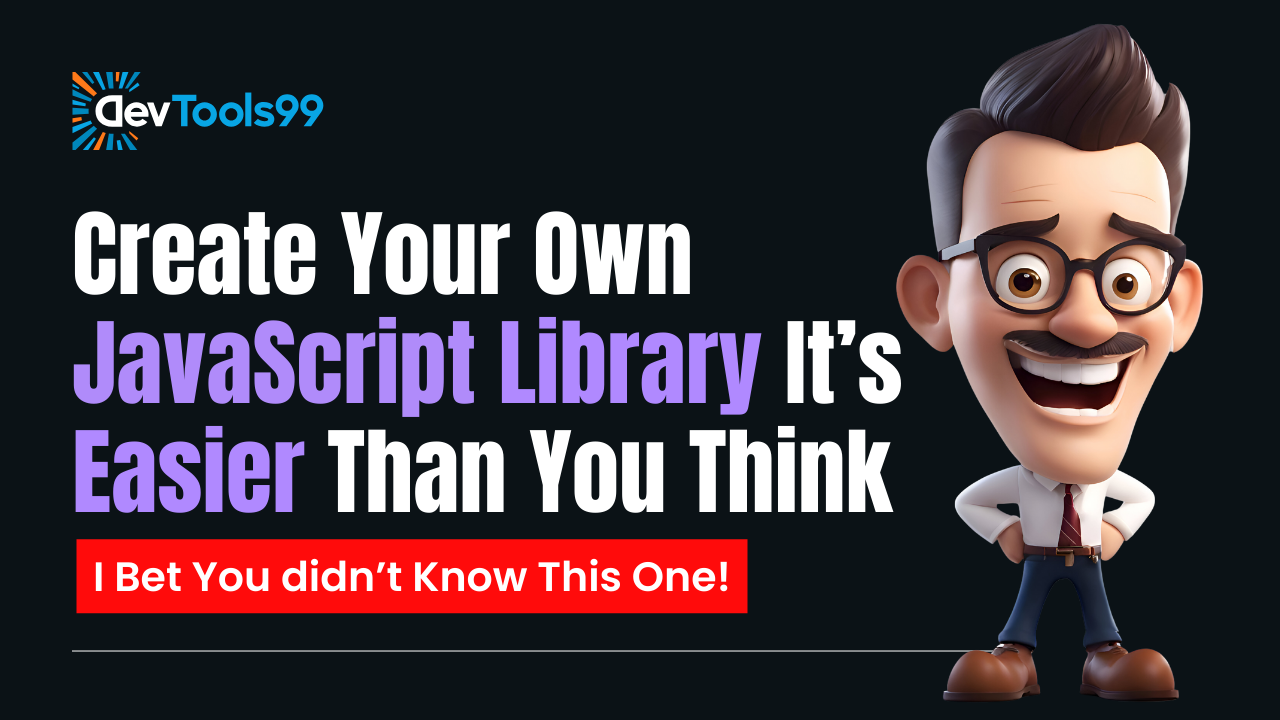
Create Your Own JavaScript Library – It’s Easier Than You Think
Have you ever wanted to build your own JavaScript library? It might seem like something only large companies or experienced developers do, but you can absolutely create and share a reusable library, no matter your experience level. In this guide, we'll break down how you can develop, package, and distribute your own JavaScript library from scratch.
Why Build Your Own Library?
Before diving into the technical steps, it’s important to understand why building your own library can be so beneficial. Here are a few key reasons:
- Solve Repetitive Problems: Every developer encounters repetitive tasks—whether it's manipulating data, handling dates, or managing arrays. By turning common code into reusable functions, you save time and effort.
- Share Knowledge: When you create something useful, why not share it? By publishing a library, you contribute to the developer community and help others solve similar problems.
- Expand Your Skills: Developing a library forces you to dive deeper into JavaScript, especially when learning advanced concepts like bundling and versioning. It’s a great way to grow as a developer.
- Gain Recognition: Publishing an open-source library helps build your reputation in the developer community. It can serve as a portfolio piece that demonstrates your skills.
Step 1: Create the Folder Structure
Before writing any code, you need to set up your project folder. A well-organized folder structure is crucial, especially as your library grows in complexity.
- Project Root: This is where you’ll place important files like
README.md,LICENSE, andpackage.json. - src folder: Inside
src, create anindex.jsfile, which will hold the core code for your library. This separation keeps your source code clean and manageable.
Think of this as the foundation for your library. A clear and organized project structure is key to maintaining and scaling your code as your library evolves.
Step 2: Write Your index.js Code
Now, it’s time to write the core logic for your library inside src/index.js. This is where you'll define all the reusable functions, classes, or modules that other developers will import and use.
For example, you could start by creating utility functions such as deep cloning objects, manipulating arrays, or formatting dates. These should be common tasks that developers can use repeatedly in their own projects. The goal here is to keep your code modular and well-documented.
Step 3: Set Up package.json
The package.json file is the heart of your project. It defines your library's metadata, dependencies, and scripts. By running a command to initiate it, you’ll be prompted to fill out essential information like the name, version, and description of your library.
This file will also include important settings for version control and how your library interacts with other tools like NPM or Yarn. This step sets the foundation for distribution and makes sure your library is properly recognized when developers install it.
Step 4: Write a README File
Your README.md is the documentation for your library. This is the first thing developers will see when they explore your library, so it’s crucial to make it clear and informative.
In the README, explain:
- What your library does: Provide an overview of its purpose.
- How to install it: Give instructions on how to download and include your library in a project.
- How to use it: Include detailed examples and code snippets showing how your library works.
Good documentation is key to ensuring that other developers understand how to use your library effectively.
Step 5: Publish to NPM
Once everything is in place, it's time to share your library with the world by publishing it to NPM (Node Package Manager). NPM is a platform where developers can publish and share their JavaScript packages, making them available for others to use in their projects.
First, you’ll need to create an NPM account if you don’t already have one. Once registered, you can publish your library using a command in your project’s root directory. From there, developers around the world can install your library by running a simple command like npm install your-library.
Step 6: Time to Test Your Library
After publishing, it’s important to test your library to ensure it works as intended. In a new project, install your library and try importing its functions. Make sure that it integrates smoothly and functions as expected.
Testing allows you to catch any potential issues before other developers encounter them. It’s also a good practice to write tests for your code so that future updates don’t accidentally introduce bugs.
Final Tips for Success
Here are some final pointers to ensure your library thrives in the developer community:
- Keep It Simple: When starting out, focus on solving a specific problem. Your library doesn’t need to be large or complex. In fact, many successful libraries started with just one or two useful functions.
- Maintain Your Library: Once published, keep an eye on user feedback. Respond to issues, fix bugs, and update your library regularly to stay relevant.
- Promote Your Library: Share your library on GitHub, Twitter, and other developer communities. Getting your library noticed can lead to contributions from others and establish you as a respected developer.
Conclusion
By following these steps, you'll be able to create, publish, and maintain your very own JavaScript library, making your mark in the developer community. Whether you're looking to solve a problem, expand your skills, or gain recognition, building a JavaScript library is a rewarding process. Now go ahead, build something amazing!
Follow Us:
Stay updated with our latest tips and tutorials by subscribing to our YouTube Channel.
